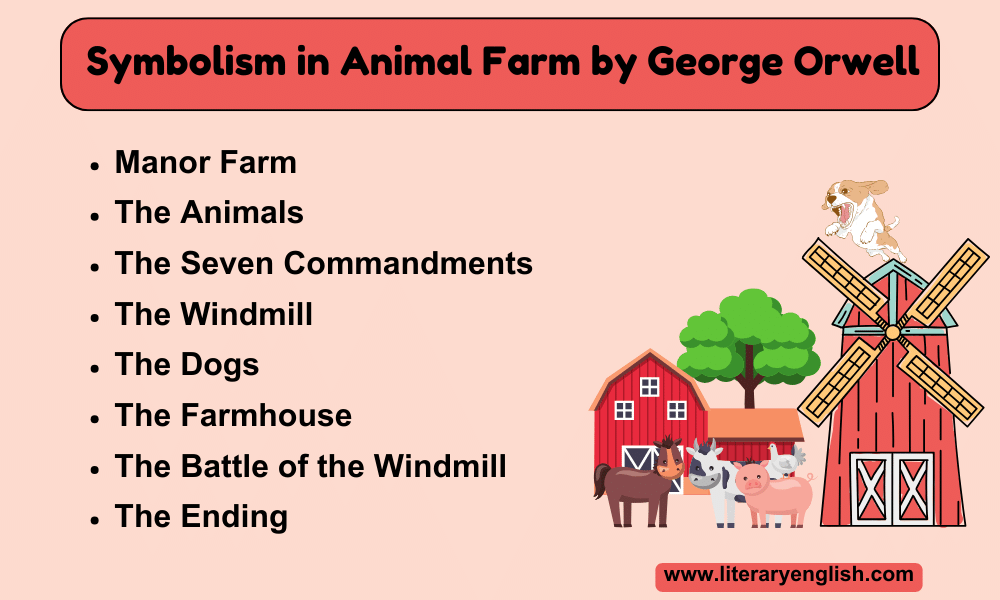“Animal Farm” by George Orwell is rich with symbolism, with characters, events, and settings representing broader themes and concepts.
Symbolism in Animal Farm
Here are some key examples of symbolism in Animal farm:
- Manor Farm
Manor Farm, later renamed Animal Farm by the rebellious animals, symbolizes Russia and the Soviet Union under communist rule. The farm serves as a microcosm of society, reflecting the dynamics of power, inequality, and oppression that Orwell critiques.
- The Animals
Each animal on the farm represents a different segment of society or historical figure. For example, Old Major symbolizes Karl Marx and Vladimir Lenin, while Napoleon represents Joseph Stalin. Boxer, the loyal cart-horse, symbolizes the working class, while Benjamin the donkey represents the skeptical intellectuals.
- The Seven Commandments
The Seven Commandments of Animalism, initially created to promote equality and unity, symbolize the principles of communism. However, as the pigs alter and manipulate the commandments to suit their own agenda, they come to symbolize the corruption and hypocrisy of totalitarian regimes.
- The Windmill
The windmill represents industrialization and technological progress. Initially proposed by Snowball as a means of improving the animals’ lives, the windmill becomes a symbol of false promises and exploitation when Napoleon takes credit for its construction and uses it to oppress the other animals.
- The Dogs
Napoleon’s pack of ferocious dogs symbolizes the secret police and military force used by dictators to maintain control and suppress dissent. The dogs embody fear, intimidation, and brute force, serving as instruments of tyranny on the farm.
- The Farmhouse
The farmhouse, where the pigs eventually move in and adopt human habits, symbolizes the corruption of revolutionary ideals and the emergence of a new ruling class. The pigs’ transformation into indistinguishable oppressors mirrors the betrayal of the revolution’s principles.
- The Battle of the Windmill
The battle represents the struggle for power and dominance between competing factions. It reflects real-world conflicts such as the Russian Civil War and World War II, highlighting the destructive consequences of greed, ambition, and ideological differences.
- The Ending
The final scene, where the pigs and humans converge in a drunken celebration, symbolizes the betrayal of the revolution and the collusion between oppressors. It underscores Orwell’s message about the cyclical nature of tyranny and the ease with which power corrupts.
Conclusion
In “Animal Farm,” symbolism is used to convey Orwell’s sarcastic analysis of totalitarianism, oppression, and the perversion of revolutionary ideals. Each symbol serves to deepen the novel’s themes and provide insight into the complexities of power and human nature.
Related Posts from Animal Farm
- Animal Farm in Historical Context
- Plot Overview of Animal Farm
- Introduction To Animal Characters
- Chapter-Wise Summary
- Principal Theme of Animal Farm
- Animal Farm as an Allegory
- Character Analysis Of Old Major
- Snowball vs. Napoleon
- Symbolic Significance of Bleating Sheep
- The Song “Beasts Of England” In George Orwell’s
